Art in Bloom – Japanese Jubako and Fubako
PRIMITIVE - Thursday, April 14, 2016By Misaki Imagawa
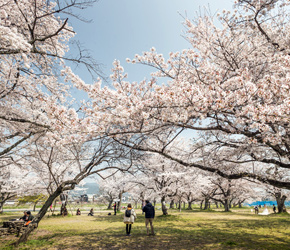 |
|
|
|
春天 - 日本奈良
A small cherry blossom petal landed abruptly and silently in a cup of chilled barley tea. Shinobu, the man cradling the cup found his gaze drawn to tiny ripples spreading across the surface, momentarily forgetting what his wife Chiyo, was talking about. A gust of wind blew across the hillside meadow where they sat picnicking under the Sakura trees in full bloom. Chiyo hurriedly stacked traditional lacquered food boxes filled with their lunch to avoid any petals landing inside, but Shinobu hardly noticed. It was snowing cherry blossoms. They streaked everywhere, tumbling off branches and dancing in the air. In the distance, their two children were running in circles trying to catch the falling flowers. The sight was ethereal and beautiful. It filled his heart with joy and it brought to mind his mother's final letter to him.
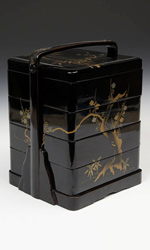 |
|
|
|
Dear Shinobu,
Last night I had a peculiar dream. It was a memory of when I was a young girl. My sisters and parents were sitting together beneath the cherry blossoms all afternoon and into the evening. When night fell my mother lit paper lanterns and the cherry blossoms appeared to glow against the backdrop of night. Drinking rice wine, my father gazed at the drifting blossoms. He used to always recite an old poem, but I had forgotten the words until I heard it in my dream. "Flowers beckoned by the storm fill the garden with white; not snow that scatters but the years of my life."
The poem was written by a court official named Saionji Kintsune in the 12th century. It's strange how the words come back to me now, when my hands are wrinkled and my days numbered. How fleeting life truly is. It took passing my father in age to finally understand what his poem meant. Cherry blossoms are beautiful because they fall – just as life is beautiful because our time is limited. The passage of time stops for no one, so we learn to appreciate and treasure each moment – with family, friends and loved ones. That reminds me, why not do something special this year with your family – take them to the hillsides of Mt. Yoshino where I used to take you as a young boy to view the cherry blossoms. There is a special lacquer box for packing festive meals that my mother, your grandmother, received as a family heirloom. She gave it to me. Now it is my turn to give it to you. It would please me if you took it.
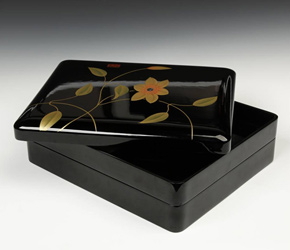 |
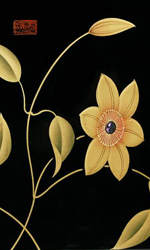 |
|
|
|
||
Shinobu placed a hand on the black lacquered boxes his wife had stacked. The sides depicted a pine tree, bamboo shoots and plum blossoms – ‘Three Friends of Winter’ – symbolizing steadfastness, perseverance and resilience. Lingering on the plum blossoms, he mused how art was the only medium that could freeze them in full bloom. The tradition of viewing and admiringcherry开花,叫hanami, originally began with the viewing of plum flowers and stemmed from a Chinese tradition.
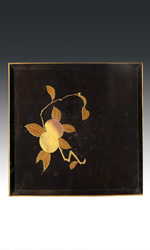 |
|
|
|
萨加皇帝在海安(Heian)早期(794-1185)统治的皇帝是在京都帝国法院的樱花季节期间第一个举行Hanami宴会的人。诗是写下樱花的精美性以及它们如何象征生命的短暂美的写作。从法院贵族和贵族制度开始,Hanami的传统最终在穆拉莫尼末期(1336-1573),然后在和平江户时代(1603-1868)中传播到武士战士阶级。
赏花,a major festival celebrating one of the four seasons, came to be associated with tiered food boxes called朱巴科。堆叠它们的传统通常是用漆木制成的,不仅是为了功能,而且还象征着对“积累”的好运的渴望。朱巴科(Jubako)的记录可以追溯到穆拉莫(Muromachi)时期的历史文字。传统上,他们每个季节都有四个级别的表达。尽管今天最突出地用来提供特殊的新年餐点,但这是在江户时代出现的后来的发展。以前,它们被用于Hanami节日,并称呼hanami-ju, or for any other outing, for which they were called鼠尾草。当然,这些活动只有上层阶级才能享受休闲活动。因此,漆面的盒子变成了相关的财富和精致。因此,他们被称为荣誉时态o-jubako.
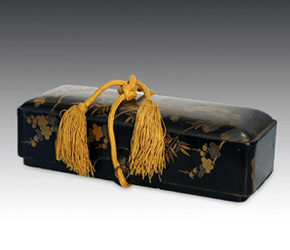 |
|
|
|
对朱巴科的尊重并非仅仅源于他们的文化背景。装饰漆的艺术将它们进一步提升为钦佩和鉴赏家的对象。从最基本的角度来看,漆在木材上产生一个保护层,该保护层是水和耐酸的。在东方,它是传统上用乌什奥尔制成的toxicodendron vernicifluum, a close cousin of poison ivy. The toxic properties of the liquid, along with its long drying time under carefully controlled conditions made it a craft requiring great skill. Historical excavations in Japan have revealed lacquered artifacts from ancient times, suggesting the ancient indigenous development of the technique. However, lacquering did not come to be recognized as a major art form until after the 6th century when much cultural advancement was introduced from China.
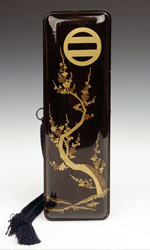 |
|
|
|
尽管很早就受到中国和韩国美学的影响,但日本漆的作品很快发展出一种独特的风格,强调了抒情和优雅的表面装饰。黄金和银箔的镶嵌物也像其他材料(例如贝壳和矿物质)一样受到了极大的青睐。特别是,被翻译为“洒水”的maki-e被称赞为日本装饰艺术最高的艺术形式之一。在maki-e中,将黄金和银色的粉末撒在湿漆上,使用薄竹芽或精美的刷子,这项技能需要多年的学徒才能掌握。漆被用来装饰各种各样的物体,包括佛教艺术品,写作盒,祭坛,折叠屏,剑术,鞍座,家具,当然还有朱巴科。
Back on the hillside beneath the cherry blossoms, Shinobu told his children about the special heirloom their grandmother had left them. He knew they didn't understand half of what he explained about the cultural and artistic heritage, but he determined he would bring his family to hanami next year and tell them again. It wasn't just the art he wanted them to appreciate, but also what it represented – the ephemeral beauty of life. He hoped everyone could view springtime blooms and scattering cherry blossoms; and they would be reminded to treasure the here and now in all of life's fleeting moments.
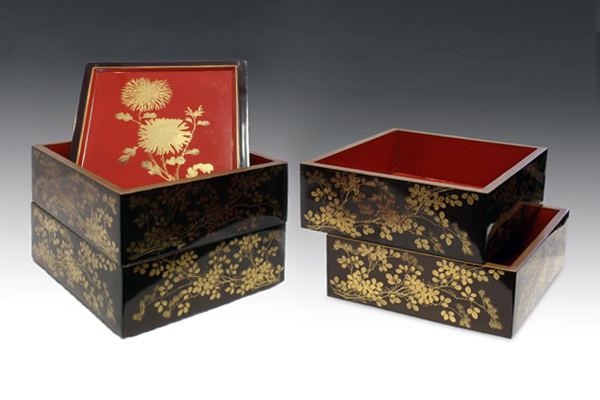 |
|
|
下载此博客:亚愽娱乐
{module_literature,i,151766}